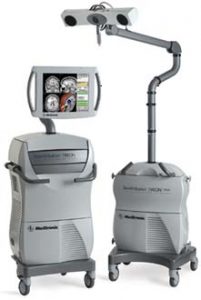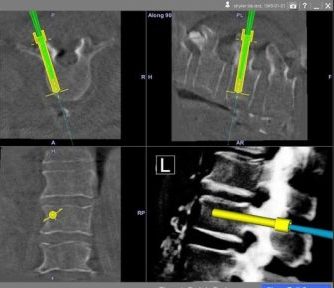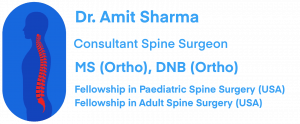Computer Assisted Spine Surgery
Computer Navigation in Spine Surgery
Computer assisted spine surgery involves use of computer navigation for spine instrumentation. Multiple x-ray/ CT images of patients spine are fed into the computer. These images are obtained either by a pre-operative CT scan or intra-operative O-arm/ C-arm based fluoroscopic images. Computer will analyse these images and will make a 3D image of spine. With the help of infra-red markers, computer will navigate implant insertion instruments in the correct direction as will be seen on computer screen.
A robotic spine surgery will have all these steps. In addition, a robotic arm will align itself in line with planned trajectory for screw insertion to remove any error caused by hand movements while inserting the screws.
Advantages of Computer Navigation Assisted/ Robotic Spine Surgery:
- Accuracy of screw insertion is increased compared to free hand screw insertion.
- Minimally Invasive Spine Surgery: These techniques will help in MIS spine surgery as screw entry landmarks are not exposed.
- Severe Spine Deformity: These techniques are especially useful for inserting screws in deformed bones in cases with severe scoliosis/ kyphosis.
- Cervical screw insertion: Margin of error is very narrow in cervical spine. Computer navigation is especially useful to avoid inadvertent damage to surrounding vital structures while instrumenting small bones of cervical spine.
- Revision Spine Surgery: Bony landmarks for screw insertion are not available in revision spine surgeries.
Disadvantages/ Limitation of Computer Assisted Spine Surgery:
- Even though the accuracy of screw insertion is increased, still there is some error due to inherent technical factors.
- Cost of surgery goes up due to the use of specialized instruments and disposable items required for these procedures.
- There is significant cost of these specialized machines, hence they are available in selected hospitals only.
It is important to understand that even though computer navigation provides better accuracy for spine instrumentation, it is not required for routine spine surgeries. Availability and increased cost are also important factors.


